[FIX] Can’t Create Folders in Windows Explorer on Windows 11
In Windows 11 Explorer, trying to create a new folder may result in no folder appearing or the focus jumping to the address bar, stopping the folder from being named. This happens because Explorer does not move input focus to the new folder pane, leaving the address bar active.
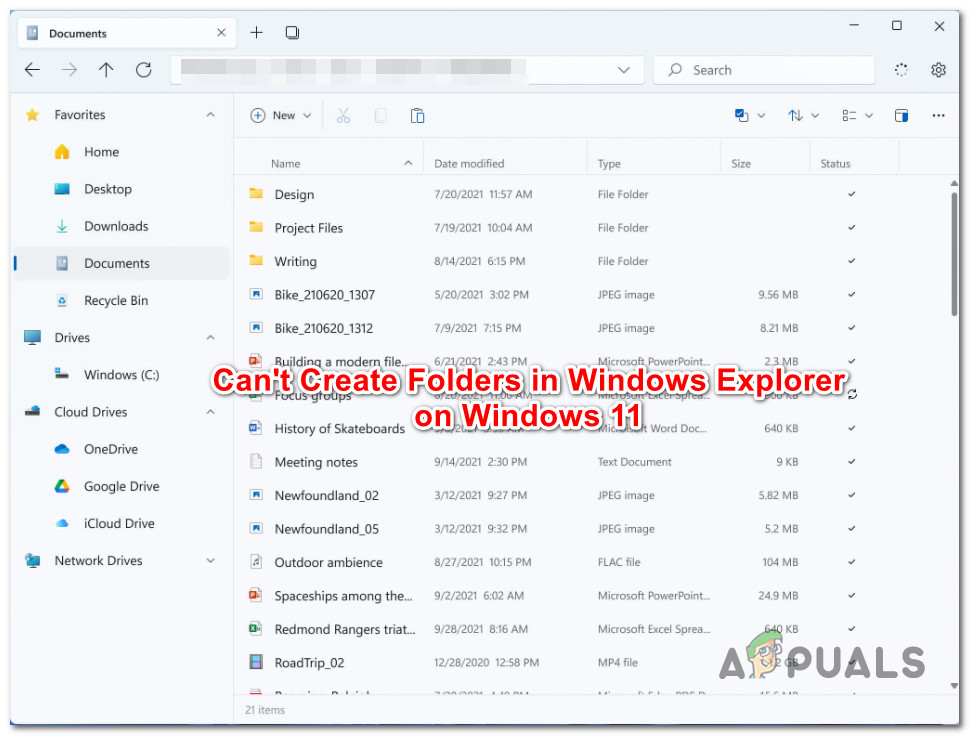
The most common cause is a focus bug caused when the address bar stays selected after using the “New” menu, with other causes including missing or broken registry context-menu handlers
Now that we’ve gone over every potential reason why you might be experiencing this problem, let’s visit every confirmed fix that other affected users have successfully used to get to the bottom of this issue:
1. Create a new folder via CMD
If you’re in a rush and you don’t have time to troubleshoot the root cause, a quick workaround is to create the folder from an elevated CMD prompt.
IMPORTANT: This will not fix the root cause of the issue. Use this only if you’re in a hurry. For a permanent fix, try the other methods below.
- Press the Windows key + R to open a Run dialog box.
- Type ‘cmd’ in the box, then press Ctrl + Shift + Enter to open an elevated Command Prompt.
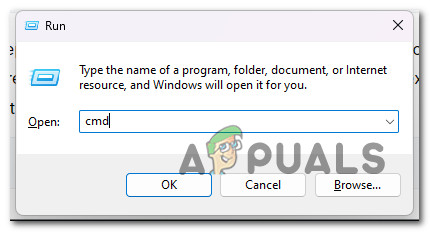
Open a CMD window - Click Yes to grant admin access when the User Account Control (UAC) prompt appears.
- In the elevated Command Prompt, navigate to the location where you want to create the folder with:
cd "PATH"
Note: Replace PATH with the actual location where you want to create the folder.
- Type (or paste) the following command and press Enter:
mkdir "FOLDER-NAME"
Note: Replace FOLDER-NAME with the actual name of the folder you want to create.
- After you complete these steps, open File Explorer and check if the new folder is there.
- If the CMD command didn’t work for you, try running a PowerShell command from the same window:
powershell New-Item -Path "PATH-TO-FOLDER" -Name "FOLDER-NAME" -ItemType "directory"
Note: Replace PATH-TO-FOLDER and FOLDER-NAME with the actual location and folder name.
2. Run the File & Folder Troubleshooter
You are likely dealing with a permission problem if none of the techniques above have enabled you to create a new folder on your Windows 11 computer.
You should try running the File & Folder troubleshooter if this scenario seems relevant.
Note: This tool has several automated fixes that may resolve the issue preventing you from creating new folders. If it detects a known problem, it will apply the repair automatically.
- Go to the Windows File & Folder troubleshooter download page and click the Download button.
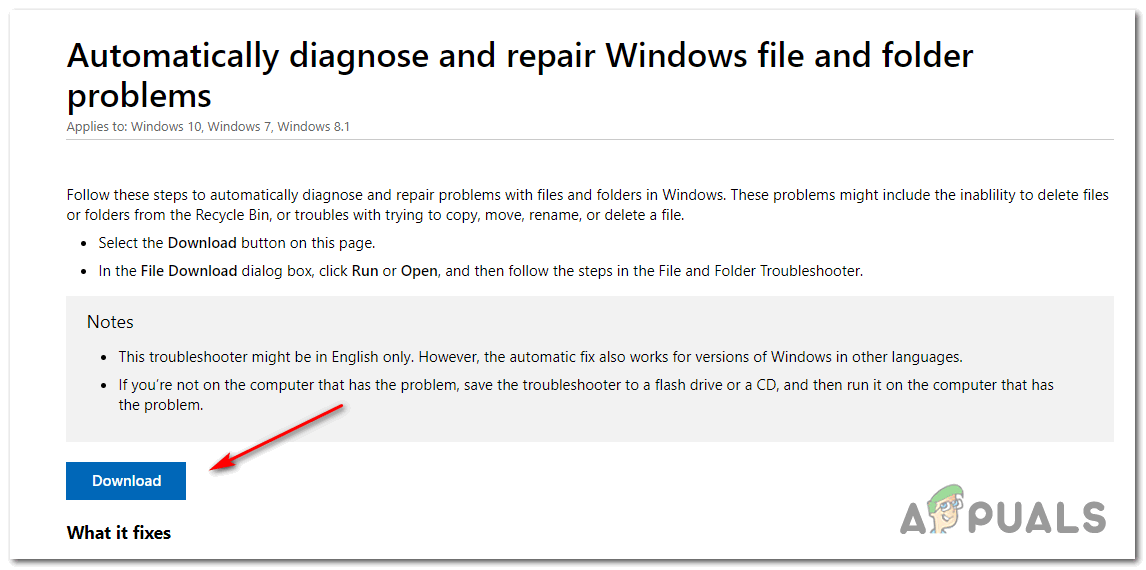
Download the file & folder troubleshooter - After the .diagCab file downloads, double-click it and select Yes when User Account Control (UAC) asks for admin rights.
- On the File and Folder Troubleshooter screen, click Advanced and check Apply repairs automatically. Then click Next to start the scan.
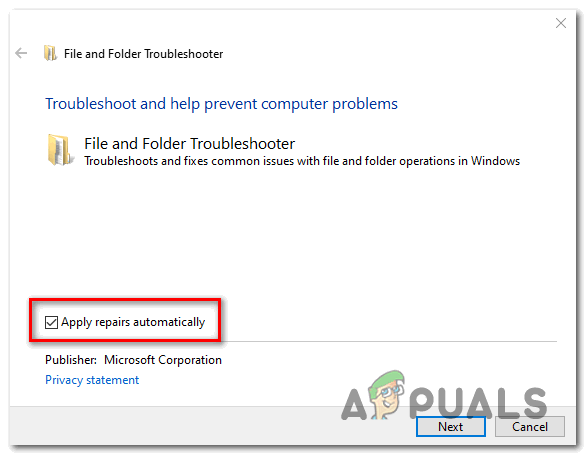
Applying repairs automatically - After the first scan finishes, select the checkboxes that match the issues you’re experiencing.
- When the troubleshooter completes, review what it found and fixed. If something was repaired, restart your computer and test again.
3. Make sure that you have Full Control over the parent folder
Another common cause is when the main folder where you’re creating the subfolder doesn’t grant you enough permissions.
If this applies, right-click the main folder and adjust permissions from the Properties screen so you have Full Control and Read permissions.
Note: This helps when the issue happens only in specific locations while other directories work normally.
- Open File Explorer (Windows key + E) and go to the location where you can’t create new folders.
- Right-click the parent folder and choose Properties from the context menu.
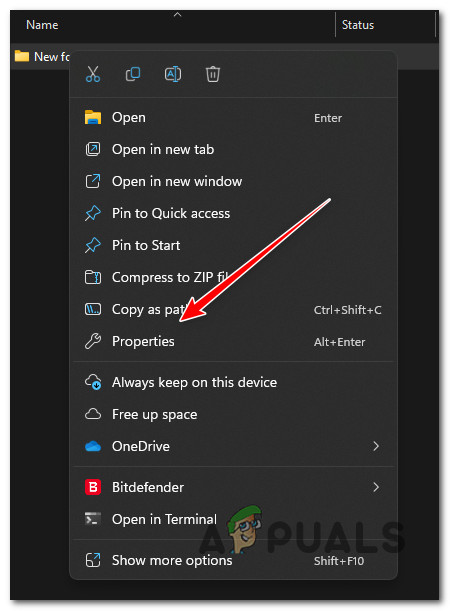
Access the Properties screen - In Properties, click the Security tab, then click the Edit button next to “To change permissions, click Edit.”
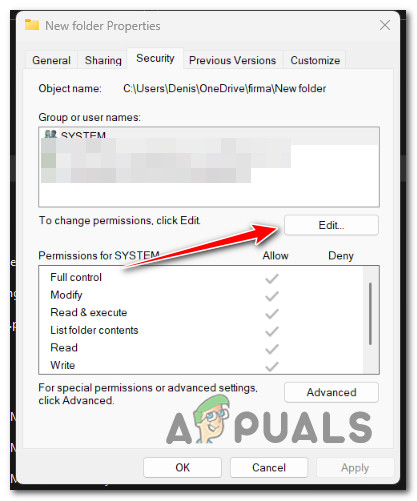
Changing Permissions
- Check the Allow boxes for Full Control and Read, then click Apply to save the changes.
- Reboot your PC and test again.
4. Reset the current folder view
If changing permissions didn’t help, check whether a folder view setting is causing the issue.
Several affected users who were dealing with the same problem confirmed they fixed it by opening File Explorer Options and resetting the folder views.
- Press the Windows key + R to open a Run dialog box.
- Type ‘control.exe folders’ inside the box, then press Ctrl + Shift + Enter to open File Explorer Options with admin access.
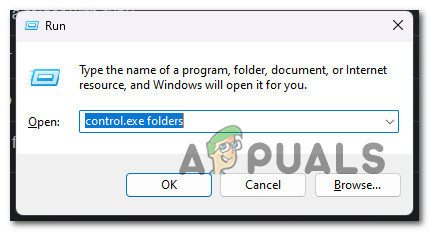
Access the File Explorer Options - Click Yes to grant admin access at the User Account Control (UAC).
- In File Explorer Options, click the View tab and then click Reset Folders (under Folder views).
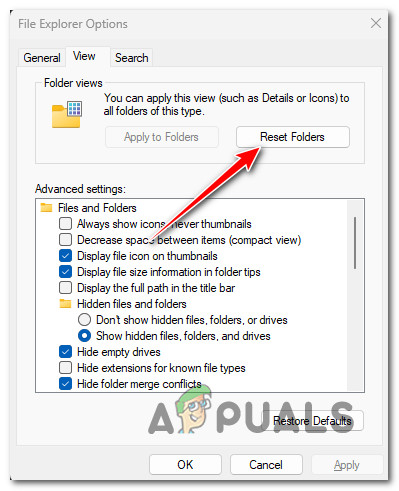
Reset Folders - At the confirmation prompt, click Yes to confirm.
- Reboot your PC and test again.
5. Create a New User Account
A corrupted Windows profile can also cause this. Many users who couldn’t create new folders reported the issue was resolved after switching to a local account.
Note that using this approach effectively drops any corrupted dependencies tied to your current profile.
- Press Windows key + R to open the Run dialog box.
- Type “ms-settings:otherusers” and press Enter to open the Family & other users section of the Settings app.
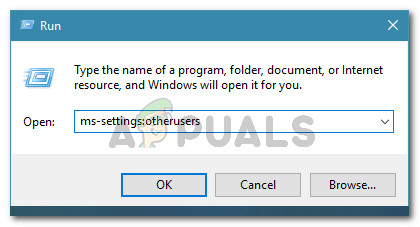
Access the Other Users tab - Scroll down to the Other users section and click Add someone else to this PC.
- Select “I don’t know this person’s sign-in information” to create a local account.
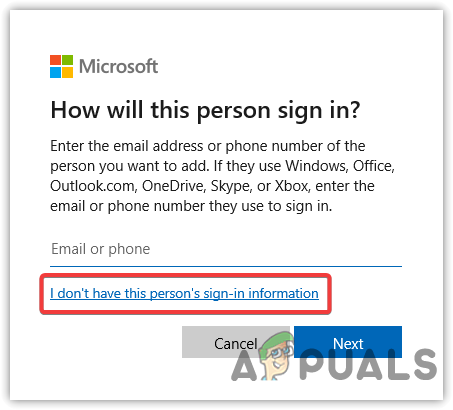
Don’t have this persons sign in information - On the next screen, click Add a user without a Microsoft account.
- Set up the new account’s username, password, and security questions.
- Restart your computer and sign in with the new account.
- Try creating a new folder and see if it works.
6. Deploy SFC and DISM scans
System file corruption can also cause folder creation problems on Windows 11. This often happens on systems with limited resources.
System File Checker (SFC) and Deployment Image Servicing and Management (DISM) can scan for corrupted files and replace them with healthy copies.
Even though both tools aim to fix corruption, they work differently: SFC uses local files, while DISM uses Windows Update to fetch fresh copies.
We recommend you start with an SFC scan.
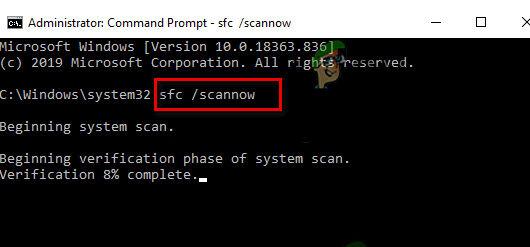
After the SFC scan completes, restart your PC, then run a DISM scan.

Note: Make sure your Internet connection is stable before starting the DISM procedure.
If these tools identify and fix corrupted files, follow the on-screen prompts. After DISM finishes, restart your computer and test again.
7. Fix the Registry Inconsistency
If you’ve come this far without a fix, try a registry adjustment that has helped many users restore the “New” context menu behavior in Windows 11.
This method involves creating a new key under ContextMenuHandlers named New and setting its (Default) value to reset the folder creation entry.
Note: We recommend you back up your registry before proceeding so you can roll back if needed.
- Press the Windows key + R to open a Run dialog box.
- Type ‘regedit’ and press Ctrl + Shift + Enter to open Registry Editor with admin access.
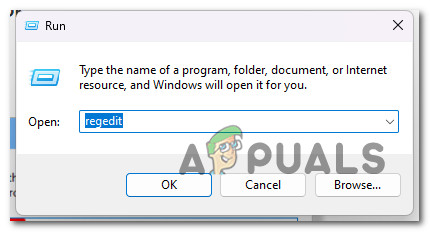
Open Registry Editor - Click Yes to grant admin access at the User Account Control (UAC).
- In Registry Editor, navigate to:
HKEY_CLASSES_ROOT\Directory\Background\shellex\ContextMenuHandlers
Note: You can navigate manually or paste the path into the address bar and press Enter.
- Right-click ContextMenuHandlers and choose New > Key.
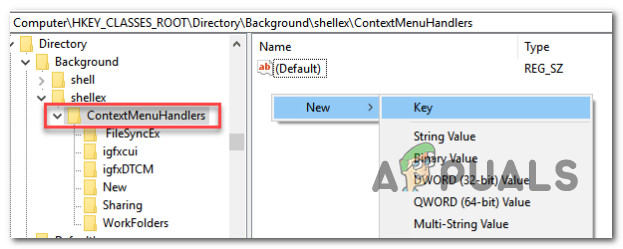
Access the Context Menu handles - Name the new key New and press Enter.
- Select the New key, then on the right, double-click (Default) (or right-click it and choose Modify).
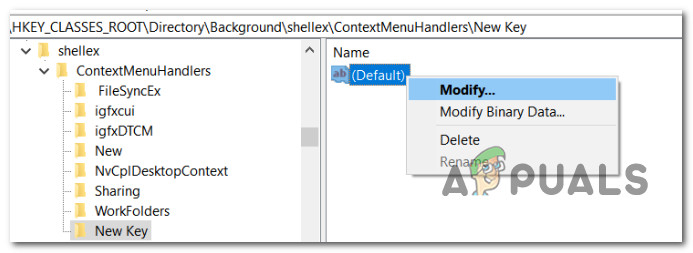
Modify the Default key - In Edit String, set the Value data to {D969A300-E7FF-11d0-A93B-00A0C90F2719} and click OK.
- Reboot your PC and check if the problem is resolved.
8. Disable Controlled Folder Access
You might have trouble creating new folders because the AV setting (Controlled folder access) is blocking changes in certain locations.
Note: Controlled folder access protects your data by allowing only trusted apps to make changes.
While useful, it can sometimes prevent creating folders in “sensitive” locations.
If you only have problems in specific locations and you’re using Windows Security, follow these steps to disable Controlled Folder Access temporarily:
- Press the Windows key to open the Start menu.
- Type ‘controlled folder access’ in the search bar, then click Controlled folder access from the results.
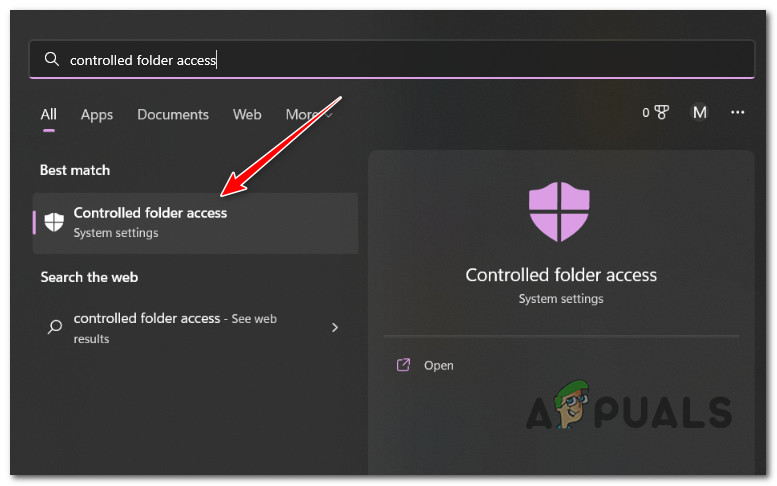
Access the Controlled folder access - Turn off the Controlled folder access toggle.
- Reboot your PC and test again.
9. Perform a Clean Boot
If third-party programs and services run at startup, software you installed might indirectly block folder creation. To check this, reach a clean boot state and see if the issue disappears.
If the problem happens only sometimes, a third-party process could be interfering.
The best approach is to clean boot and then gradually re-enable services and startup items until you find the culprit — it’s virtually impossible to list every potential offender.
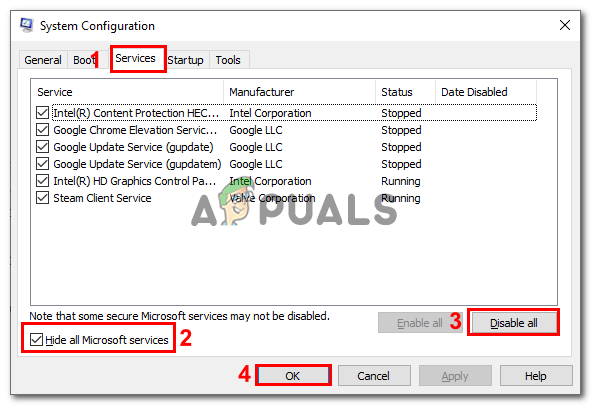
In this situation, starting in clean boot mode and checking for software conflicts should help you pinpoint the problematic service or process.
Note: In a clean boot, Windows starts without third-party services, processes, or startup items, which helps rule out conflicts.
To achieve this clean boot state, follow the step-by-step directions in this article.
10. Perform a repair install or clean install
If none of the fixes above worked, the issue is likely caused by deep system file corruption.
You have two options:
- Repair install – Recommended if possible. This reinstalls Windows system files without touching your personal files or installed apps.
- Clean install – Best if you want a fresh start. Be aware this will erase everything on the OS drive (media, documents, apps, and games).




